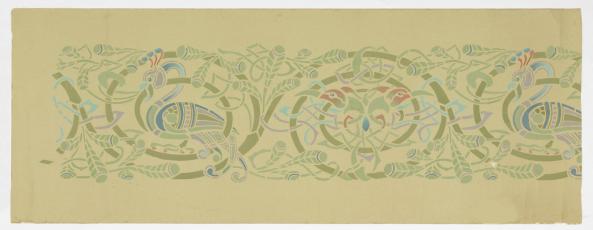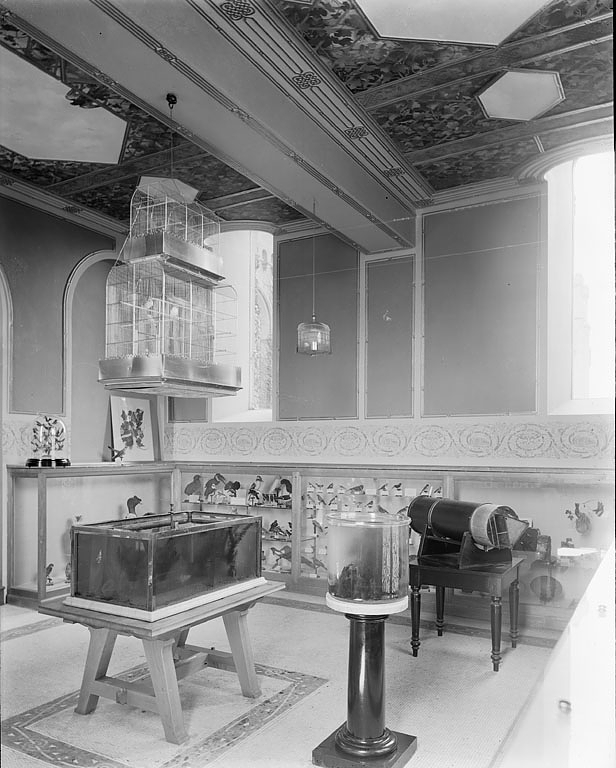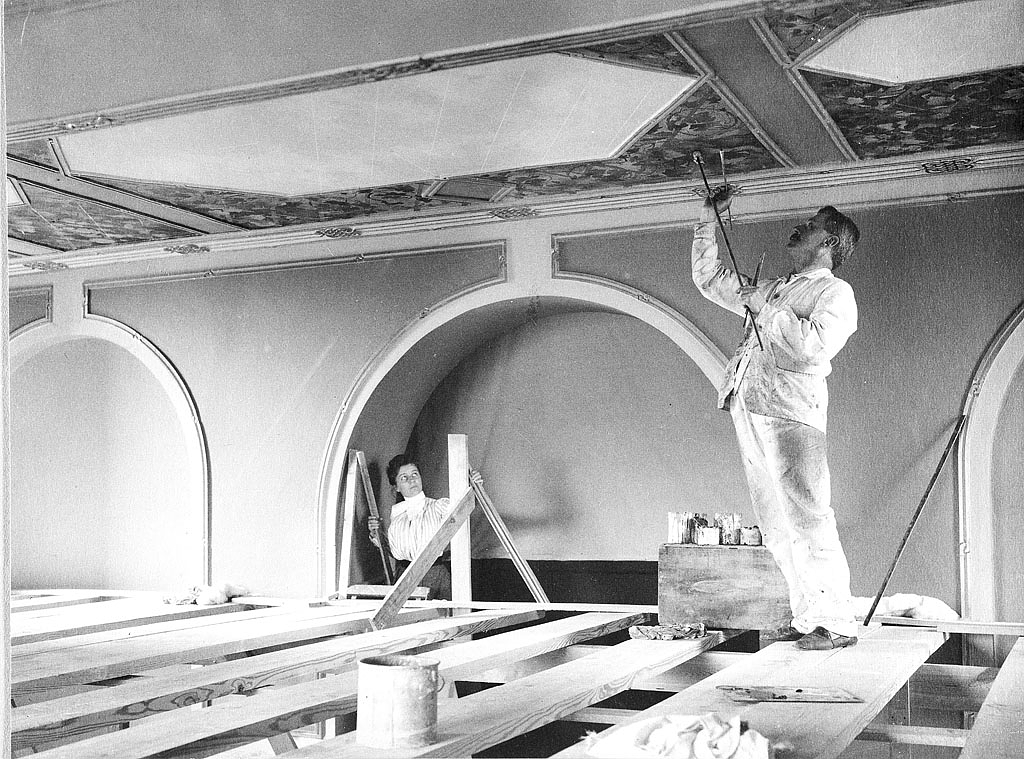When Smithsonian Secretary Samuel Pierpont Langley (1834-1906) envisioned a space for children at the Smithsonian, he tried to see it from the perspective of his “young clients.” And he began by remembering himself—not yet a scientist trying to discover the key to successful aircraft flight, or an astrophysicist, or the leader of the Smithsonian Institution—but as a boy watching, fascinated, as a hen hawk flew in the sky.
A young Langley, birdwatching in a pasture in his hometown of Roxbury, Massachusetts, was inspired to know more about what he observed. Years later, in 1901, Langley wanted to help create that spark for a new generation of young naturalists at the Smithsonian. And he began by seeing the museum—with its towering cases full of objects—from their point of view.
“Speaking, therefore, in their behalf, and as one of them, I should say that we never have a fair chance in museums. We can not see the things on the top shelves which only grown-up people are tall enough to look into, and most of the things we can see and would like to know about have Latin words on them which we cannot understand: some things we do not care for at all, and other things which look entertaining have nothing on them to tell us what they are about.”
Langley appointed himself Honorary Curator of his Children’s Room, a new gallery he envisioned where children’s imagination was at the forefront: a small, “cozy, pleasant room, with plenty of light and pretty things.” While he wanted to create a comfortable environment where children could learn, the main goal of the space was to spark in them a sense of wonder and curiosity about the natural world. Langley had this guiding principle, “Knowledge Begins in Wonder,” painted on the Children’s Room entrance and set out to create a place in the Smithsonian where that could become a reality.
To help bring his vision to life, Langley hired renowned designer Grace Lincoln Temple. In addition to Temple’s work on design for the Smithsonian Castle rotunda, Temple had a thriving, high-profile career as an interior decorator. After studying at the Art Museum School in Boston, she became one of the first women to decorate a public U.S. building. In addition to being a leading authority on Colonial wallpaper design, Temple worked on interior decorating in the White House’s East Room under the Cleveland administration. She also served on the design and decoration committees for the planning of Theodore Roosevelt’s and William Howard Taft’s inaugurations, as well as decorated the United States Government Building at the 1904 World’s Fair.
Temple’s work on the Children’s Room wasn’t her only example of putting her design skills to use for education. During her time as Chairman of the Decorating Committee for the newly-established American Federation of Arts in 1909, she worked on a project to bring artwork into D.C. public schools, with a goal of inspiring children to learn more about art and visit museum collections.
Temple had the unique skillset needed to take Langley’s goals for the Children’s Room and channel them into the room’s visual design. A sun-lit space was set aside in the Castle’s South Tower. Temple chose shades of green for the walls, with a bright, stenciled wallpaper frieze of birds running across the center. This type of wallpaper stenciling, hand-done by Temple, was a rare and time-consuming process.

The design for the Children’s Room fresco ceiling had echoes of Langley’s own childhood birdwatching. The ceiling depicts an ornate, leafy trellis opening up to a clear, blue sky, peppered with colorful birds looking down upon the room’s inhabitants. Among those inhabitants were actual birds themselves, “little singers…from the many far and near corners of the world,” kept in gilt cages for children to view. Alongside the birds were fish tanks, including one invented by Langley himself—an ornate kaleidoscope with live fish inside.
Sitting on top of the mosaic floor, and arranged at children’s eye-level, were specimens in cases. The number was deliberately smaller than the specimens displayed in the Smithsonian’s other galleries—Langley did not want the children to feel overwhelmed. To that end, the way the specimens were labeled changed, too. Langley banned the complicated Latin names from the Children’s Room, in favor of species’ common names (with one exception: a humming bird, “who bears bravely its technical title, Rhamphomicron microrhynchum, left by the honorary curator as the best explanation of why he has not retained the others.”).
The Children’s Room—two years in the making—remained open in its original location from 1901 through 1939. The reception to Langley and Temple’s efforts was positive and garnered national press attention for over a decade after its opening. A 1912 description of the “curios for children” describes the Children’s Room as a “very bright and cheery apartment...among the dim old rooms of the Smithsonian Institution.” In 1915, a news article praised Langley’s vision as “far-sighted,” and the end result “entertaining to the adult as well.” This is in keeping with Langley’s hopes for the room, as described in the 1901 Annual Report of the Board of Regents of the Smithsonian Institution:
“Perhaps the child who has passed an hour or two in this room full of interest and pleasure does not know or care to whom his happiness and his thanks are due. It does not matter. If he only cares for the thing itself, cares enough to come again, and perhaps bring his parents, that they too may look and learn with young eyes…the Secretary and Honorary Curator will be amply repaid.”
Related Resources
A Favorite - The Smithsonian Carousel, The Bigger Picture Blog, Smithsonian Institution Archives
Smithsonian Kids, Smithsonian
Produced by the Smithsonian Institution Archives. For copyright questions, please see the Terms of Use.








Leave a Comment